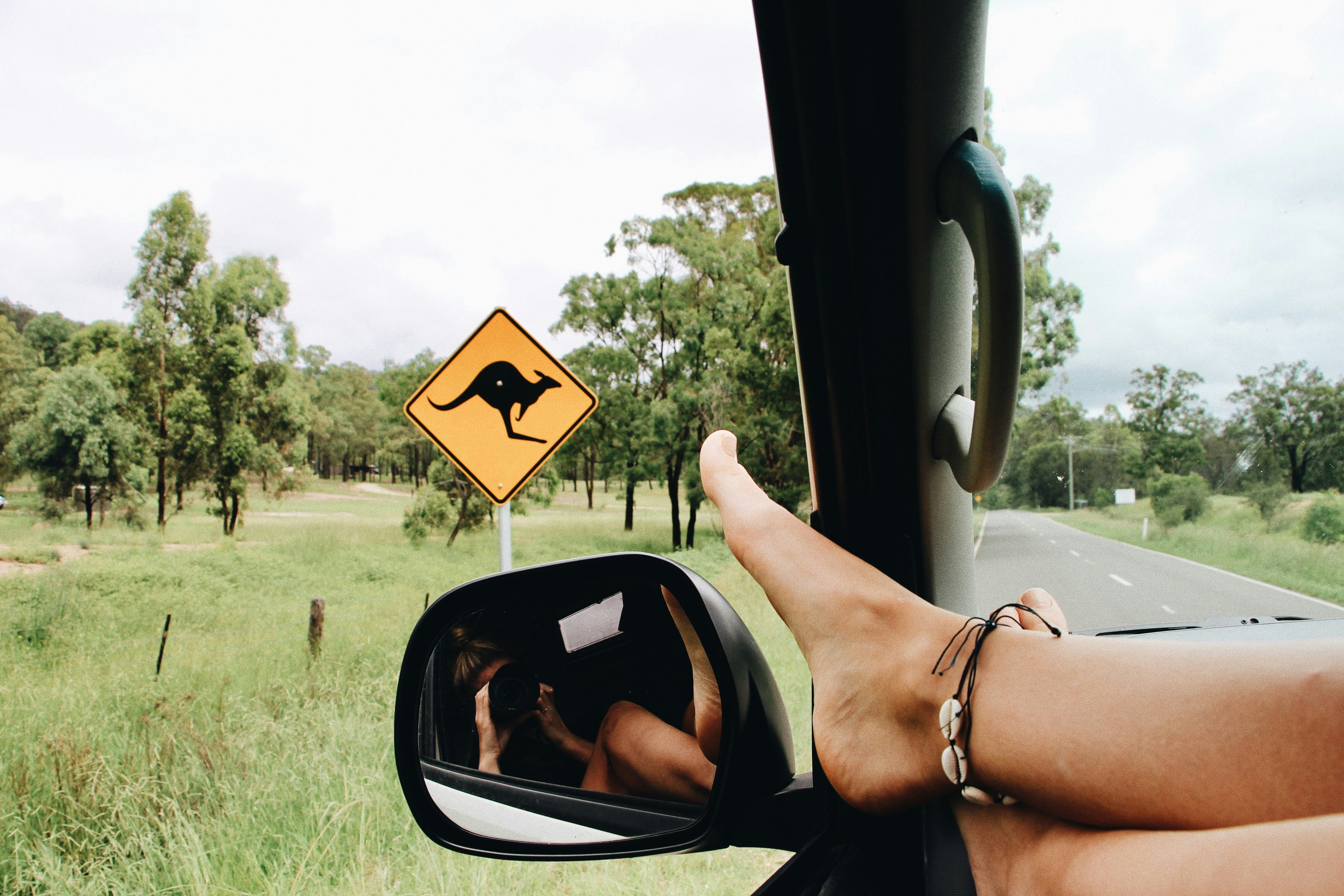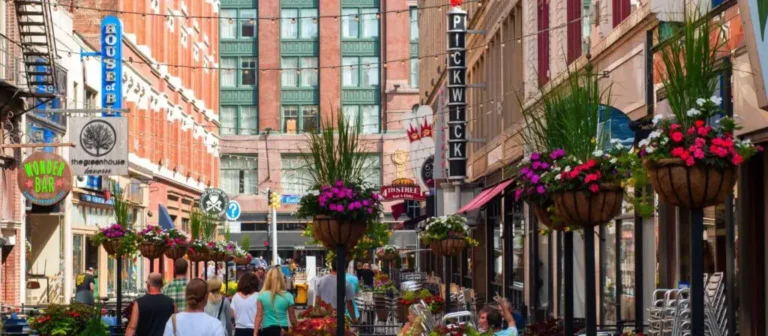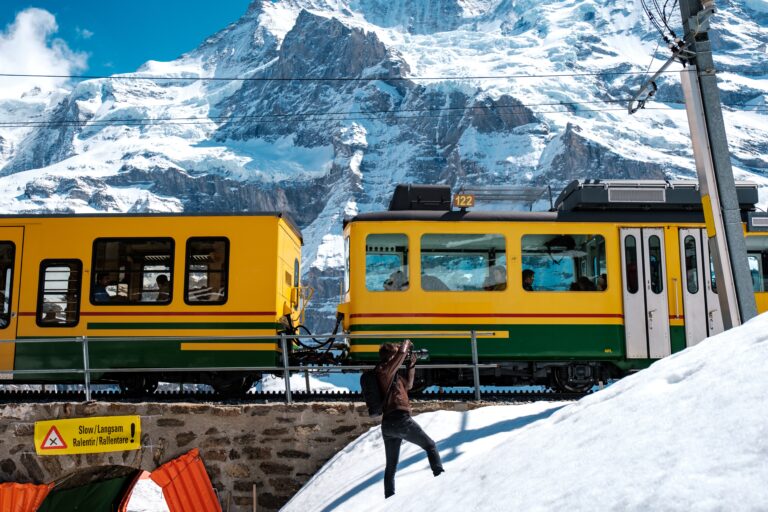Whether you’re seeking the thrill of exploring the remote wilderness or the allure of cosmopolitan city life, Australia has something to offer everyone. Here we delve into the best way to travel around Australia, exploring the advantages and unique experiences offered by each mode of transport. From the soaring heights of air travel to the immersive journey of train travel, and the freedom of road trips to the convenience of urban transport, we’ll uncover the best ways to navigate this captivating land and discover its hidden gems.
Flying is considered the best way to cover Australia’s large distances in a short time. Domestic airlines like Qantas, Virgin Australia, and Jetstar provide efficient options for traveling across the country
Explore with Ease: Best Way to Travel Around Australia
As a seasoned traveler, I consider Australia one of the best countries to explore. With its diverse landscapes, rich culture, and friendly locals, Down Under offers a unique experience that’s hard to forget. However, when it comes to traveling around this vast continent, planning can be overwhelming. That’s why I’m here to help you navigate the transportation options, create a budget, and provide some tips to make your trip smooth and enjoyable.
Choosing the Right Transportation Method
If you’re planning a trip to Australia for the first time, or prefer to explore the country without a car, choosing the right transportation method is crucial to ensure a smooth and enjoyable journey. Australia has a range of transportation options to choose from, including:
- Domestic flights
- Trains
- Buses and coaches
- Ferries
- Taxis and ride-sharing services
- Bicycles and e-scooters
Most Common Transportation in Australia
The most common mode of transportation in Australia is by car, but for those who prefer not to drive, public transport is the ideal choice. Trains and buses are widely accessible, affordable, and eco-friendly options that provide convenient and efficient travel within and between cities. Taxis and ride-sharing services are prevalent in urban areas, while ferries offer scenic travel across waterways and to islands.
Pro Tip: Consider purchasing a transportation pass, such as Myki in Melbourne or Opal in Sydney, to save money and travel more efficiently.
If you’re traveling long distances, domestic flights are an efficient option, with major airlines such as Qantas, Virgin Australia, and Jetstar operating throughout the country. Alternatively, coach and train services offer scenic routes, with the legendary Indian Pacific train journey providing a cross-country experience like no other.
Best Way to Travel Around Australia Without a Car
If you’re exploring Australia without a car, public transport is your best bet. Trains and buses provide extensive coverage of both urban and regional areas, and their schedules are available online. Ferries are also a popular choice for island hopping and traveling along the coast.
If you prefer faster travel, domestic flights are an efficient option, and frequent flyer programs can help you earn rewards and reduce costs. Ride-sharing services such as Uber and Ola are available in major cities, while bicycles and e-scooters are popular choices for short trips and exploring scenic areas.
Best Way to Travel Around Australia for the First Time
If you’re visiting Australia for the first time, it’s recommended to stick to the major cities and tourist destinations, which have well-connected transportation systems. Domestic flights, buses, and trains offer easy access to popular locations such as Sydney, Melbourne, the Great Barrier Reef, and Uluru. Tour packages and guided tours are also great options for exploring new places and ensuring a stress-free experience.
Overall, the best way to travel around Australia depends on your budget, travel style, and itinerary. With a range of transportation options available, it’s easy to explore the country with ease and enjoy all that it has to offer.
Exploring the Australia East Coast
The Australia East Coast is a must-visit destination for anyone traveling to Down Under. Boasting a stunning coastline, vibrant cities, and natural wonders, this region has something for everyone. To help you make the most of your trip, I’ve put together some insights on the best way to explore the Australia East Coast.
Transportation Options
There are various transportation options to get around the East Coast, depending on your preferences and budget. The most popular way to explore this region is by car, but for those who prefer not to drive, there are plenty of alternatives.
Greyhound Australia, for example, offers reliable and affordable bus services that connect major cities along the coast. Additionally, trains and flights are available for longer journeys or to reach destinations further inland.
Must-Visit Destinations
There are several must-visit destinations along the Australia East Coast that are worth your time. Starting from the south, Melbourne is a vibrant and multicultural city that’s perfect for foodies and culture lovers. Moving north, Sydney is famous for its iconic Opera House and Harbour Bridge, while the nearby Blue Mountains offer stunning scenery for nature enthusiasts.
Further up the coast, Byron Bay is a laid-back surf town that’s popular with backpackers and hippies. The Great Barrier Reef, a UNESCO World Heritage Site, is a must-visit destination for anyone interested in marine life and snorkeling or diving.
Accommodations
Accommodation along the Australia East Coast ranges from budget-friendly hostels to luxury resorts. Backpackers and budget travelers can find affordable accommodation in most towns and cities, while those seeking a more luxurious experience can opt for high-end resorts or apartments.
Food and Drink
Food and drink options along the East Coast are diverse and exciting, with a focus on fresh and local produce. Seafood is a particular highlight, with oysters, prawns, and fish being popular choices. Additionally, Australia is famous for its coffee culture, with many cafes serving up delicious brews.
Traveling to Australia from the United States
If you’re traveling to Australia from the United States, it’s important to plan your journey carefully to ensure a smooth and comfortable trip. Here are some tips on the best way to travel to Australia from the US:
- Choose the Right Route: There are multiple routes to Australia, but the best one for you depends on your budget, travel preferences, and the time you have available. Some common routes include flying from Los Angeles or San Francisco via Fiji, Hawaii, or New Zealand. Alternatively, you can fly from New York or Dallas via the Middle East or Asia.
- Book Your Flights Early: The earlier you book your flights, the better the deals you can get. Keep an eye out for special promotions and discounts, and sign up for alerts from airlines or travel websites.
- Consider a Stopover: With such a long journey, it’s a good idea to consider a stopover to break up the trip and explore a new city. Popular stopover destinations include Fiji, Hawaii, Singapore, and Dubai.
- Prepare for the Long Flight: The flight from the US to Australia can take up to 24 hours, so it’s important to prepare accordingly. Dress comfortably, bring entertainment, and pack a neck pillow, blanket, and eye mask to help you sleep.
- Bring the Right Documents: Make sure you have a valid passport and any necessary visas or travel documents before you depart. The Australian government requires all visitors to have a valid visa or Electronic Travel Authority (ETA) to enter the country.
- Know the Time Difference: Australia is ahead of the US by several hours, so it’s important to adjust your sleep schedule accordingly. Try to get plenty of rest before your trip and plan your activities accordingly once you arrive.
- Exchange Currency: You can exchange currency at the airport or through your bank before you depart. Familiarize yourself with the exchange rate and carry some Australian dollars with you for immediate expenses upon arrival.
By following these tips, you can ensure a comfortable and hassle-free journey to Australia. Remember to plan ahead, consider your options, and enjoy the journey!
Navigating Australia’s Public Transport System
With a well-connected and efficient public transport system, getting around Australia’s cities and regions has never been easier. Here’s what you need to know about Australia’s public transport system:
Australia Public Transport Card
Most cities in Australia operate on a smart card system that allows you to travel on buses, trains, and trams with a single card. The system is called Opal in Sydney, myki in Melbourne, go card in Brisbane, SmartRider in Perth, and Metrocard in Adelaide. These cards can be loaded with credit as you go or topped up in advance online or at stations.
Australia Public Transport Price
Public transport prices in Australia vary depending on the city or region you’re in, with prices ranging from a few dollars to around $20 for a day pass. As an example, in Sydney, a single adult fare for trains, buses, or ferries costs between $3.15 and $4.71, depending on the distance. In Melbourne, a two-hour fare costs $4.50, and in Brisbane, a single fare ranges from $3.20 to $5.60 depending on the distance.
| City | Smart Card Name | Sample Fare |
|---|---|---|
| Sydney | Opal | $3.15-$4.71 |
| Melbourne | myki | $4.50 |
| Brisbane | go card | $3.20-$5.60 |
| Perth | SmartRider | $1.98-$4.90 |
| Adelaide | Metrocard | $3.54-$5.20 |
To save money on transportation costs, most cities offer discounted fares for children, students, and seniors. Additionally, some states offer unlimited travel for a set price, making it an affordable option for those planning on using public transport frequently.
It’s worth noting that public transport services may have limited operating hours on weekends and public holidays, so it’s always a good idea to check schedules in advance. Overall, Australia’s public transport system is a convenient and cost-effective way to explore the country’s urban and regional areas.
Budgeting and Costs
Traveling around Australia can vary in cost depending on your preferences and travel style. To ensure you budget accordingly, it’s important to consider the following factors:
Accommodation
The cost of accommodation in Australia varies greatly depending on the type of lodging you prefer. A budget-friendly option is staying in a hostel, which can range from $20 to $40 per night. However, if you’re looking for a more luxurious stay, expect to pay upwards of $200 per night for a hotel room.
Meals
The cost of food in Australia is similar to that of the United States. Fast food chains and casual restaurants can cost around $10-$20 per meal, while mid-range to upscale restaurants can cost anywhere from $50 to $200 for a meal for two.
Transportation
Transportation costs can vary depending on the method of travel. If you’re planning to rent a car, the cost can range from $30 to $100 per day. Public transportation is a cheaper option with a daily pass for buses, trains, and trams costing around $10-$20. Domestic flights can cost between $50-$200 depending on the destination and time of year.
Attractions
Some of Australia’s top attractions, such as the Great Barrier Reef, can be expensive, with tickets costing upwards of $150 per person. However, there are also many free and low-cost attractions to visit, such as national parks and museums.
Overall Costs
On average, a budget-conscious traveler can expect to spend about $70-$150 per day in Australia, depending on their travel style. This includes accommodation, meals, transportation, and attractions. However, if you’re looking to splurge on high-end experiences, expect to pay upwards of $500 per day.
Hidden Gems and Local Tips
Exploring Australia can be a thrilling experience, and discovering hidden gems and local tips can make your journey even more unforgettable. To truly explore with ease and get off the beaten path, consider the following:
Escape the Crowds
When planning your itinerary, don’t be afraid to venture beyond the popular tourist hotspots. Australia boasts a plethora of stunning beaches, national parks, and charming towns waiting to be explored. Consider visiting lesser-known destinations such as:
- Seal Rocks, New South Wales – a scenic coastal village with excellent surfing and hiking trails
- Cape Le Grand National Park, Western Australia – home to picturesque beaches and hiking trails with breathtaking views
- Birdsville, Queensland – a remote town in the Outback known for its annual horse races and stunning sunsets
Embrace Local Culture and Cuisine
Australia has a diverse culture, and its food scene is no exception. To experience local cuisine and support small businesses, consider:
- Visiting a local farmers market to try fresh produce and artisanal products
- Dining at a pub or restaurant that features native Australian ingredients such as kangaroo, crocodile, or emu
- Attending a cultural festival or event to experience music, art, and traditional customs
Connect with Locals
Australians are known for their friendly and welcoming nature. To connect with locals and gain insider knowledge, consider:
- Joining a local tour or activity group to meet like-minded travelers and locals
- Attending a community event or festival to engage with locals and learn about the area’s history and culture
- Volunteering with a local organization to give back to the community and meet new people
“Exploring hidden gems and experiencing local culture can truly enhance your Australian journey. Don’t be afraid to step outside your comfort zone and try new things. The memories you create will last a lifetime.”
Safety and Practical Tips
Traveling around Australia can be an exciting adventure, but it’s essential to prioritize your safety and well-being. By following some practical tips, you can ensure your trip is seamless and enjoyable.
Emergency Contacts
Before embarking on your Australian journey, make sure to note down some emergency contacts. These include the local police, ambulance, fire department, and your embassy or consulate. It’s also wise to share your itinerary and contact details with a trusted friend or family member.
Weather Considerations
Australia’s weather can be unpredictable, so it’s advisable to check the forecast regularly. The country experiences severe weather events such as cyclones, floods, and bushfires. If you’re traveling during these periods, stay updated with the latest news, and follow evacuation or safety guidelines issued by the authorities.
Stay Aware of Local Laws and Customs
Each state and territory in Australia has its own laws and regulations. As a visitor, you’re required to comply with these laws, including road rules, alcohol limits, and smoking bans. It’s also important to respect local customs and traditions, such as indigenous cultures and sacred sites.
Travel Insurance
Travel insurance is an essential part of your trip to Australia. It can provide coverage for unforeseen events such as medical emergencies, trip cancellations, or lost luggage. Make sure to read the policy details carefully and choose a plan that suits your needs and itinerary.
Safety on Public Transport
Australia has an excellent public transport system, but it’s essential to stay alert and aware of your surroundings. Keep an eye on your belongings and avoid traveling alone at night in unfamiliar areas. Always follow the rules and safety guidelines provided by the transport operators.
Stay Hydrated and Protected
Australia’s climate can be hot and dry, especially during summer months. It’s crucial to stay hydrated by drinking plenty of water and wearing sunscreen to protect your skin from harmful UV rays. You may also want to wear a hat and sunglasses for additional protection.
Respect Wildlife
Australia is home to unique and diverse wildlife, including kangaroos, koalas, and various reptiles. When visiting natural habitats, it’s important to respect and appreciate the animals’ space and environment. Avoid feeding or touching them and take care not to disrupt their natural behaviors or habitats.
Following these practical tips can help ensure a safe and enjoyable trip to Australia. By prioritizing your safety and well-being, you can explore the country with ease and create unforgettable memories.
Packing Essentials for Your Australian Adventure
When it comes to exploring Australia, packing efficiently can make your journey more enjoyable. Here are some essentials to pack for your Australian adventure:
- Comfortable clothing: Australia has a varied climate, so it’s important to pack comfortable clothing suitable for warm and cool weather. Pack layers to adjust to changing temperatures in different regions.
- Swimwear: With stunning beaches and natural pools, swimwear is a must-have for any Australian adventure.
- Comfortable shoes: Whether you’re hiking through national parks or exploring cities, comfortable shoes are essential to keep you going all day.
- Sunscreen: The Australian sun is strong, and it’s important to protect your skin. Pack sunscreen with at least SPF 30 and remember to reapply regularly.
- Insect repellent: Some parts of Australia have mosquitos and other insects that can be a nuisance. Pack insect repellent to avoid bites and stings.
- Reusable water bottle: Stay hydrated and reduce waste by packing a reusable water bottle. Tap water in most parts of Australia is safe to drink.
- Power adapter: Australia uses different electrical outlets than many countries. Pack a power adapter suitable for Australian outlets to keep your devices charged.
- Camera or smartphone: With stunning landscapes and unique wildlife, Australia offers countless photo opportunities. Pack a camera or use your smartphone to capture unforgettable memories.
- Travel documents: Don’t forget to pack your passport, travel insurance, and any other necessary documents.
By packing these essentials, you’ll be well-prepared for your Australian adventure and ready to explore with ease.
Creating Unforgettable Memories
Traveling around Australia is a once-in-a-lifetime experience, filled with unique moments that will stay with you forever. Here are some suggestions to help you create unforgettable memories during your journey.
Try Something New
One of the best ways to make lasting memories is to step outside of your comfort zone and try something new. Whether it’s surfing, camping in the Outback, or tasting exotic cuisine, Australia offers endless opportunities for adventure. Don’t be afraid to take the plunge and try something you’ve never done before.
Meet the Locals
Getting to know the locals is an excellent way to gain insight into Australian culture and history. Strike up a conversation with a friendly bartender, take a guided tour with a knowledgeable local, or join a community event to meet people from all walks of life. You’ll learn more about the country and make new friends along the way.
Capture the Moment
Australia boasts some of the world’s most breathtaking scenery, and capturing those moments on camera can make for unforgettable memories. Whether you’re using a smartphone or a professional camera, make sure to snap plenty of photos of your travels. You’ll have a lifetime of memories to look back on and share with loved ones.
Reflect on Your Journey
Finally, take some time to reflect on your journey and all the memories you’ve made. Jot down your favorite moments in a journal or share your adventure with friends and family. Reflecting on your experiences will allow you to appreciate and cherish your time in Australia even more.
Exploring Australia with ease is possible with the right transportation and travel guide. By following these tips, you’ll be able to make the most of your journey and create unforgettable memories along the way.
FAQs
What is the best route to travel Australia?
Australia offers a variety of routes for travelers depending on their interests. Some popular routes include:
– A coastal drive from Sydney to Melbourne.
– An epic Australian Outback road trip from Darwin to Adelaide.
– A scenic South Australia road trip — Southern Ocean Drive from – Adelaide to Kangaroo Island and Mount Gambier.
– Northern Territory Top End Nature’s Way Drive from Darwin to Katherine.
– Grand Tasmania road trip — Great Eastern Drive from Hobart to Bicheno and the Bay of Fires.
Remember, if you’re planning to road trip to Australia, choose your route carefully.
Is it cheaper to drive or fly around Australia?
The cost of travel in Australia can depend on various factors such as the number of people traveling, the distance, and the mode of transport. If you have a traveling party who can share the fuel cost, driving will usually be the cheaper method of travel. However, driving will nearly always take longer than flying, so if you just want to get to your destination without fuss, flying might be your best bet.
Is it easy to get around Australia without a car?
Yes, it is possible to travel around Australia without a car. The country has an extensive network of planes, trains, and buses, as well as cities that can be easily explored on foot. Long-distance buses are well-organized, clean, and comfortable. Domestic airlines such as Qantas, Virgin Australia, Jetstar, and Rex offer flights to all state capitals and many regional cities, making it easy to travel between iconic destinations.
How much money do you need to travel around Australia?
Traveling around all of Australia probably won’t cost less than AU $13,000. This figure doesn’t include the cost of getting to Australia. If you’re already in Southeast Asia, a flight could cost a couple of hundred dollars. But, if you’re on the other side of the world it could be AU $1,500 or more. Please note that these are estimated costs and actual expenses may vary depending on various factors such as the time of travel, personal preferences, and unforeseen circumstances.







